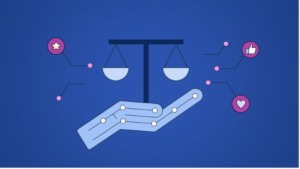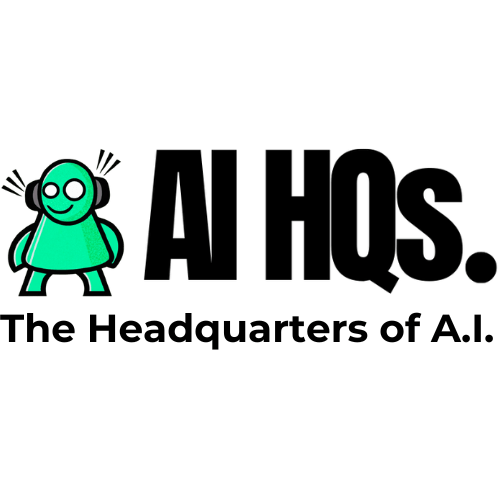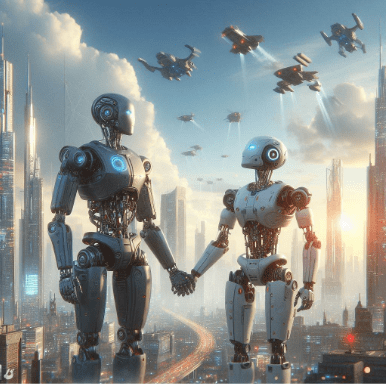The Intersection of AI, Copyright, and Generative AI Datasets
Artificial Intelligence (AI) and its applications have been making headlines recently, with innovations and advancements taking center stage. Among the many AI developments, generative AI models like GPT-3 and DALL-E have grabbed the spotlight. In this blog post, we explore the intersection of AI, copyright issues, and generative AI datasets, delving into both the possibilities and controversies surrounding these technologies.

DALL-E 3: AI-Powered Artistry
OpenAI’s latest offering, DALL-E 3, takes AI art to the next level. Built on the foundation of GPT-3, DALL-E 3 empowers users to create complex and carefully composed works of art. What’s remarkable is how it simplifies the process by eliminating the need for intricate text prompts, a practice known as “prompt engineering.” Instead, it allows users to interact with ChatGPT to provide more detailed and coherent instructions, resulting in sophisticated AI-generated artwork.
This advancement in generative AI art not only showcases the potential of AI in the creative domain but also highlights the impressive capabilities of ChatGPT, setting OpenAI apart from its competitors. DALL-E 3’s ability to combine text and visuals to create striking imagery has the potential to redefine the way art is produced and experienced.
The Books3 Dataset: A Controversial Data Source
In 2020, a group of independent AI researchers embarked on a mission to recreate GPT-3. This initiative led to the creation of a controversial dataset known as “Books3.” Shawn Presser, one of the researchers, gathered a massive collection of around 196,000 books from a variety of authors, including renowned figures like Stephen King and Margaret Atwood. While Presser and his collaborators considered this dataset a contribution to science and a means to democratize access to the data used by AI models, others view it as emblematic of the challenges with generative AI.
Books3 has raised concerns related to copyright issues and the rights of artists. Some argue that it disregards and disrespects artists’ rights and preferences. In response, efforts have been made to remove Books3 from the internet and to prevent further use of this dataset.
Legal Battles and Copyright Controversies
The controversy surrounding Books3 has led to legal battles and debates about the use of copyrighted material for training AI models. Small anti-piracy groups and authors have taken a stand against the use of such datasets. Notably, Sarah Silverman and other authors filed lawsuits against companies like Meta for allegedly infringing on their copyrights by training AI models using Books3.
These legal challenges have ignited discussions about copyright law, fair use, and the implications of AI training on copyrighted materials. While some believe that fair use doctrines might protect AI companies using such datasets, others argue that the origins of the data should factor into the issue. This legal battle raises questions about the balance between creators’ rights and the collective right to access information in the AI era.
The Path Forward: Transparency and Opt-In Models
The controversy surrounding datasets like Books3 highlights the need for increased transparency in AI research. Currently, AI companies choose whether or not to disclose the sources of their training data. This opacity makes it challenging for creators to know when their work has been used and to request its removal.
A potential path forward could involve shifting AI training into an opt-in model, where only works in the public domain or those freely given are included in datasets. This approach aims to protect artists’ rights while allowing AI innovation to continue.
As the AI landscape evolves, it’s clear that the conversation surrounding AI, copyright, and generative AI datasets is far from over. The future may bring new regulations, legal precedents, and ethical considerations that will shape how AI interacts with the creative works of humanity.
In this dynamic and ever-evolving field, the balance between AI’s potential and the rights of artists and creators will be a critical discussion point. As AI continues to advance, it’s essential to navigate these challenges while fostering innovation and respecting the creative rights of individuals.
The Ongoing Debate on Generative AI
The use of AI in generating creative content is becoming more common, leading to a growing debate on the ethical and legal aspects of this technology. While generative AI, such as DALL-E 3, has the potential to assist artists and creators in their work, it also raises concerns about the sources of data and the rights of authors, artists, and other content creators.
One of the primary issues at the heart of the debate is the use of copyrighted materials in training AI models. The creation of datasets like Books3, which contains copyrighted books and other content, has sparked controversy. Critics argue that such datasets infringe on the rights of authors and artists whose work is used without consent. They see it as emblematic of how the AI industry’s major players often disregard the rights and preferences of creators.
At the same time, supporters of open access to data and AI development argue that datasets like Books3 can level the playing field for smaller companies, researchers, and individuals interested in creating large language models. The release of such datasets is viewed as a means to democratize access to data similar to that used by AI giants like OpenAI.
Legal Battles and Authors’ Rights
The controversy surrounding generative AI datasets has spilled over into legal battles where authors and content creators seek to protect their intellectual property rights. Authors and creators whose work has been used in these datasets have initiated legal actions against AI companies, asserting copyright infringement. Prominent comedian Sarah Silverman and other authors have filed lawsuits against companies like Meta and OpenAI, alleging that these organizations infringed their copyrights by training AI models using datasets like Books3.
These legal challenges have given rise to important debates about copyright law, fair use, and the ethics of using copyrighted material for AI model training. Some legal experts argue that companies like Meta may attempt to claim fair use, a legal doctrine that allows the use of copyrighted materials without explicit permission under certain circumstances. Whether these datasets’ origins as potentially pirated material affect the fair use argument remains a point of contention.
The legal battles highlight the complexities of copyright law in the digital age. Unlike traditional copyright cases where human authors and creators are involved, AI’s use of copyrighted material adds a layer of complexity. However, the intentions of how data is obtained and used could influence court decisions. While the legal outcomes are uncertain, these cases emphasize the need for clear regulations and guidelines for AI and copyrighted materials.
Navigating the Future: Transparency and Opt-In Models
One approach to addressing the concerns surrounding generative AI datasets and copyrighted materials is to shift towards an opt-in model. In this model, only works that are explicitly placed in the public domain or are freely offered for use are included in AI training datasets. This would provide creators with greater control over where their work ends up and ensure that AI companies operate within clear legal boundaries.
Transparency is another essential aspect of navigating the intersection of AI and authors’ rights. AI companies have the option to disclose the sources of their training data. Increased transparency can empower creators to monitor the use of their work and, if necessary, request its removal from AI datasets. At the same time, it encourages responsible and ethical AI development while respecting the rights of content creators.
As the AI landscape continues to evolve, it is evident that the debate over AI, copyright, and generative AI datasets will persist. The future may bring changes in regulations, legal precedents, and ethical guidelines that will influence how AI interacts with the creative works of individuals. Striking a balance between AI’s potential and the rights of artists and creators remains an ongoing challenge and a significant discussion point in the dynamic field of artificial intelligence.
n conclusion, the evolving landscape of AI, copyright, and generative AI datasets underscores the complexities of balancing technological innovation with the rights and preferences of authors, artists, and creators. The legal battles and ethical debates surrounding these issues remind us of the importance of establishing clear guidelines, promoting transparency, and respecting intellectual property rights in the digital age. It is a delicate path to navigate, but one that ensures that AI development continues to enrich our lives while honouring the creative works of humanity.







